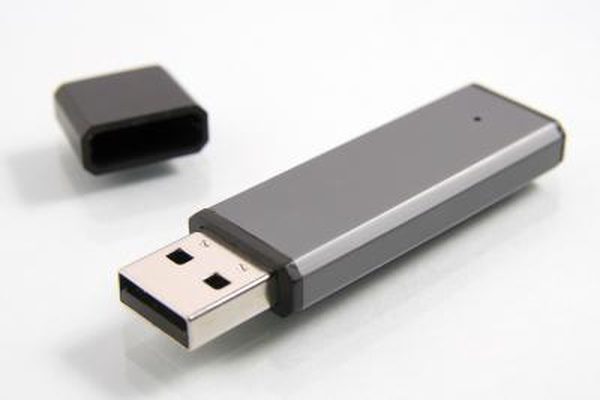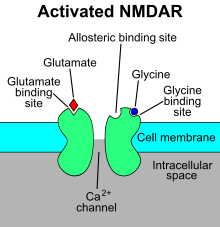2022-04-19 08:05:01
Prelude
Announcements
- Quiz 4 this Thursday
- No class this Thursday
Today’s topics
- Warm-up
- Biological basis of learning & memory
Warm-up
Why does Gilmore say the retina is anatomically ‘inside-out’?
- The dorsal stream and the ventral stream project to different cortical targets
- Information from the left visual field projects to the right hemisphere
- Photoreceptors lie at the back of the eye, away from the path of light
- Long wavelength ‘red-ish’ lights can only be seen outside
Why does Gilmore say the retina is anatomically ‘inside-out’?
The dorsal stream and the ventral stream project to different cortical targetsInformation from the left visual field projects to the right hemisphere- Photoreceptors lie at the back of the eye, away from the path of light
Long wavelength ‘red-ish’ lights can only be seen outside
Visual information from the retina projects to the ______ which controls circadian rhythms.
- Lateral geniculate nucleus (LGN) of the thalamus
- Dorso-medial nucleus of the thalamus
- Superior colliculus/optic tectum
- Suprachiasmatic nucleus of the hypothalamus
Visual information from the retina projects to the ______ which controls circadian rhythms.
Lateral geniculate nucleus (LGN) of the thalamusDorso-medial nucleus of the thalamusSuperior colliculus/optic tectum- Suprachiasmatic nucleus of the hypothalamus
Hubel and Wiesel did not find many cells in V1 that had center-surround receptive fields because
- Many cells in V1 have elongated, rectangular-shaped, receptive fields
- V1 cells don’t have receptive fields
- V1 doesn’t respond to visual information that strongly
- The visual cortex doesn’t respond strongly under anesthesia
Hubel and Wiesel did not find many cells in V1 that had center-surround receptive fields because
- Many cells in V1 have elongated, rectangular-shaped, receptive fields
V1 cells don’t have receptive fieldsV1 doesn’t respond to visual information that stronglyThe visual cortex doesn’t respond strongly under anesthesia
Biological basis of learning and memory
Memory capacity of the human brain?
Memory capacity of the human brain?
- 1e12 neurons
- 1e3 synapses/neuron
- 1e15 synapses or 1.25e14 bytes
- 1e9 gigabyte, 1e12 terabyte, 1e15 petabyte
http://www.scientificamerican.com/article.cfm?id=what-is-the-memory-capacity
Meister (2019)
“Entirety of a human’s lived experience could fit on a flash drive.”


Computer memory
- Random Access Memory (RAM), short-duration storage
- Hard-disk/flash drive storage, long-term duration
- Addressable (location ‘010101’)
Computer memory
- {text, sounds, images, video, data} all in binary [0,1] format
00110000== 48 (the number)00110000== ‘0’ (the character zero)
- Write once, read many times
Computers vs. brains
- Computers have separate memory stores
- brains store info everywhere
- Computers have addressable memory
- brain memory??
- Computer memory can be non-volatile
- brain memories fade
- Computer memory is veridical
- brain memories are ‘reconstructions’
What is learning?
What is learning?
- A: Acquisition of new or change in existing knowledge, skills, responses…
Types of learning
- Non-associative
- Change in response to repeated encounters with same stimulus/event
- Habituation -> weaker response
- Sensitization -> stronger response

- Associative
- “Associates” two events/items with one another
- Classical & operant/instrumental conditioning
- Sequence, observational, episodic, semantic
Can single-celled organisms learn?
“The question of whether single cells can learn led to much debate in the early 20th century. The view prevailed that they were capable of non-associative learning but not of associative learning, such as Pavlovian conditioning. Experiments indicating the contrary were considered either non-reproducible or subject to more acceptable interpretations.”
Can single-celled organisms learn?
“We exhume the experiments of Beatrice Gelber on Pavlovian conditioning in the ciliate Paramecium aurelia, and suggest that criticisms of her findings can now be reinterpreted…Her work, and more recent studies, suggest that such learning may be evolutionarily more widespread and fundamental to life than previously thought and we discuss the implications for different aspects of biology”
What is memory?
What is memory?
- A: Information encoding, storage, retrieval
Dimensions of memory
- Short vs. long-term
- Working memory ~ short-term maintenance for guiding action
- Explicit (declarative: semantic vs. episodic) vs. implicit (procedural)
- Retrospective (from the past) vs. prospective (to be remembered)
- Recognition (familiar or novel) vs. recall
Biological bases…
- Changes in patterns of neural activity
- Changes in connectivity
- New synapses
- Altered synapses (strengthened or weakened)
Memory systems in the brain
Donald Hebb’s Insight
When an axon of cell A is near enough to excite cell B and repeatedly or persistently takes part in firing it, some growth process or metabolic change takes place in one or both cells such that A’s efficacy, as on of the cells firing B, is increased. (Hebb, 1949, p. 62)
Neurons that fire together wire together. (Lowell & Singer, 1992, p. 211).
How to implement ‘Hebbian’ learning?
- Hebbian learning is associative
- Neuron A active + Neuron B active => associates/links co-activity
Long-term potentiation (LTP)
- Increase (potentiation) in synaptic strength based on recent co-activity
- Change at synapse == physical basis of Hebbian learning
‘Hebbian’ learning via NMDA receptor
- N-methyl-D-aspartate receptor (NMDA-R)
- ‘Coincidence’ detector
- Sending cell has released NT
- Receiving cell is/has been recently active
NMDA receptor figure
Example mechanism for ‘Hebbian’ learning
- Chemically-gated AND
- Ligand- (glutamate/aspartate + glycine) gated
- Sending cell active
- Voltage-gated
- \(Zn^{++}\) or \(Mg^{++}\) ion ‘plug’ removed under depolarization
- \(Na^+\) & \(Ca^{++}\) influx; \(K^+\) outflux
- Receiving cell responds
NMDA receptors (NMDA-R) contribute to associative learning
- Associate (link)
- Concept A -> Concept B
- Neuron A -> Neuron B
I say Donald
You say…
Donald
- Trump
- Duck
- Draper
How does LTP (& LTD) work?
- Synapses can also be weakened via long-term depression (LTD)
- NMDA receptor one molecular mechanism for implementing LTP, LTD & spike-timing-dependent plasticity
- Ca++ entry triggers biochemical cascade
- Existing (AMPA) glutamate receptors made to stay open longer
- New AMPA glutamate receptors synthesized, inserted into postsynaptic membrane
- Change in quantity of glutamate released presynaptically
NMDA clinical significance
- Memantine (Alzheimer’s Disease treatment) blocks NMDA-R
- Controls over-activation and \(Ca^{++}\) excitotoxicity?
- Implicated in effects of phencylidine (PCP)
- PCP can induce psychotic symptoms
- Link to glutamate hypothesis of schizophrenia?
NMDA clinical significance
- Ketamine is an NMDA-R antagonist
- anesthesia, sedation pain relief
- short-term relief for depression
- Linked to analgesic (pain-relieving) effects of nitrous oxide (\(N_{2}O\)) or ‘laughing’ gas
- Ethanol inhibits (Ron et al., 2011)
Learning “causal chains”
- lightning THEN thunder
- unusual food THEN indigestion
Spike-timing-dependent plasticity
Spike-timing-dependent plasticity
Spike-timing-dependent plasticity
- A before B: strengthen A->B
- A after B: weaken A->B
- Neural Plasticity
- Lasting changes in neural firing, connectivity
Memory systems in the brain
Summary
- Learning and memory involve changes in neural firing, circuitry
- Hebbian learning a type of associative learning
- NMDA receptor as coincidence detector
- Molecular basis of one form of long-term potentiation (LTP)
- Different types of information stored in different brain systems
Next time…
- More on learning and memory
References
Caporale, N., & Dan, Y. (2008). Spike timing-dependent plasticity: A hebbian learning rule. Annu. Rev. Neurosci., 31, 25–46. https://doi.org/10.1146/annurev.neuro.31.060407.125639
Gershman, S. J., Balbi, P. E., Gallistel, C. R., & Gunawardena, J. (2021). Reconsidering the evidence for learning in single cells. eLife, 10, e61907. https://doi.org/10.7554/eLife.61907
Squire, L. R. (2004). Memory systems of the brain: A brief history and current perspective. Neurobiology of Learning and Memory, 82(3), 171–177. https://doi.org/10.1016/j.nlm.2004.06.005


